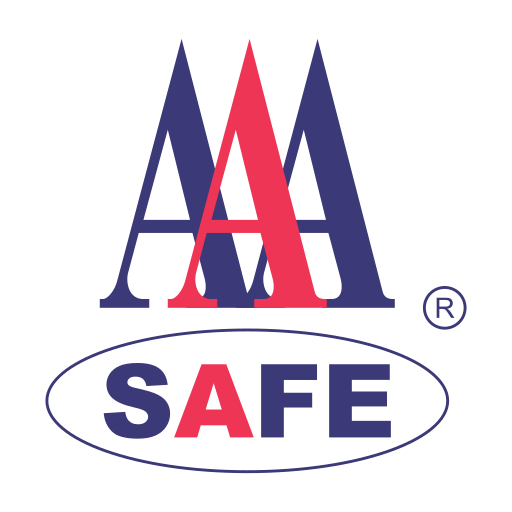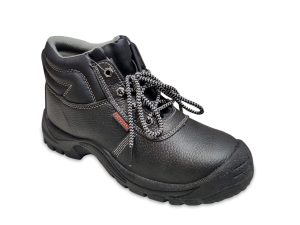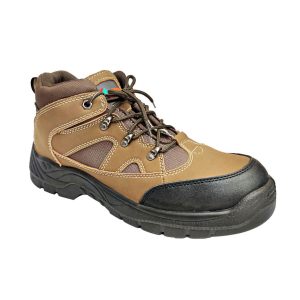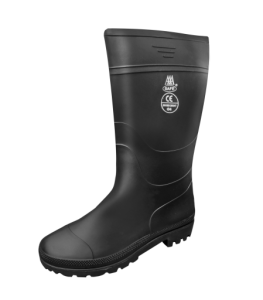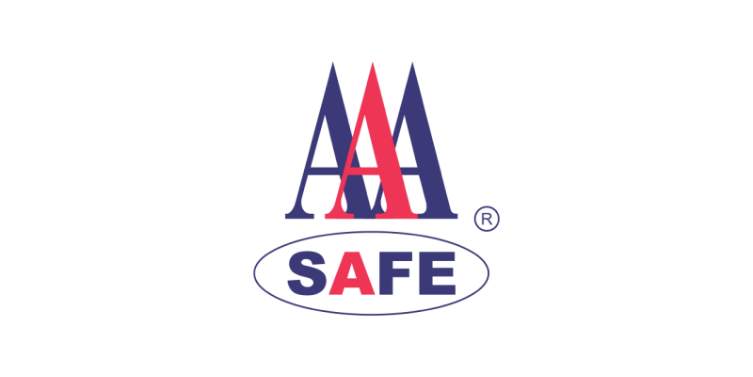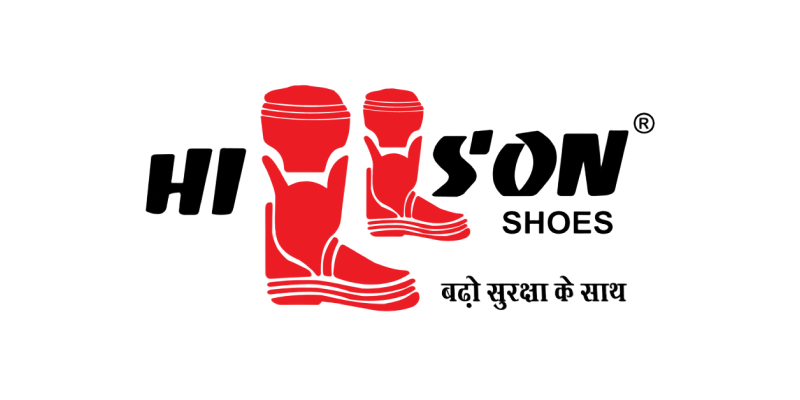In the United Arab Emirates (UAE), where workplace safety is paramount across various industries, selecting the right safety footwear is essential for protecting workers. Safety shoes, especially Steel Toe Safety Shoes and Composite Toe Safety Shoes, provide specialized protection to suit different work environments. This detailed guide examines the differences between these two types of safety shoes to help UAE businesses and workers make informed decisions.
Quick Comparison Table
Criteria | Steel Toe Safety Shoes | Composite Toe Safety Shoes |
Material Composition | Steel (rigid, durable) | Non-metallic materials (Kevlar, carbon fiber, etc.) |
Weight | Heavier due to steel | Lighter, more comfortable |
Temperature Insulation | Conducts heat and cold | Better insulation against temperature extremes |
Electrical Hazard Protection | Conducts electricity, not ideal for electrical work | Does not conduct electricity, safer for electrical work |
Metal Detection | Triggers metal detectors | Does not trigger metal detectors |
Impact Resistance | High impact resistance | Equivalent protection but may require thicker design |
Cost and Availability | Generally less expensive, widely available | Can be pricier, depending on material used |
Let’s explore each of these factors in detail, highlighting specific conditions and requirements for workplaces across the UAE.
1. Material Composition
Steel Toe Safety Shoes Composition
Steel toe caps are constructed from hardened steel, providing robust, reliable protection. This metal composition makes steel toe shoes highly suitable for workplaces with heavy machinery or where there is a risk of falling objects—common in UAE’s bustling construction sites in cities like Dubai and Abu Dhabi. Steel’s durability makes these shoes a preferred choice for heavy-duty work, providing consistent protection over extended periods.
Composite Toe Safety Shoes Composition
On the other hand, Composite Toe Safety Shoes use a combination of non-metallic materials such as Kevlar, carbon fiber, and plastic composites. These materials can be customized to enhance specific protective properties, like puncture resistance, depending on the needs of the industry. In the UAE’s diverse sectors—from oil and gas to high-tech manufacturing and even aerospace—composite materials allow safety shoes to be tailored to meet the exacting requirements of different jobs.
2. Weight and Comfort
Steel Toe Shoes Weight and Comfort
The presence of metal makes Steel Toe Safety Shoes relatively heavy, which can add strain, especially for workers on their feet for long hours. In UAE’s construction or industrial environments, this weight can become challenging, particularly in the warm climate, leading to fatigue and discomfort for workers such as construction laborers and warehouse staff who walk extensively.
Composite Toe Shoes Weight and Comfort
In contrast, Composite Toe Safety Shoes are lighter due to their non-metallic materials, improving comfort for workers during long shifts. The lighter weight reduces physical strain, making composite shoes a practical choice for jobs that demand constant movement. For example, airport employees at Dubai International Airport or Abu Dhabi International Airport often prefer composite shoes to steel ones, as they facilitate easier movement across large spaces.
3. Temperature Insulation
Steel Toe Shoes and Temperature
Due to the conductive properties of metal, Steel Toe Safety Shoes tend to absorb and transmit external temperatures. In UAE’s extreme summer heat, this can lead to discomfort, as the heat is conducted directly to the feet, increasing the risk of foot-related heat stress. However, modern designs may incorporate insulation linings, but this does not eliminate the temperature impact entirely.
Composite Toe Shoes and Temperature
Composite Toe Safety Shoes excel in insulation, providing better resistance to external temperature changes. These shoes maintain a more stable internal temperature, making them ideal for outdoor workers in UAE sectors like construction or oil fields, where exposure to high temperatures is unavoidable. Their insulation helps workers maintain foot comfort, reducing the risk of overheating or excessive sweating.
4. Electrical Hazard Protection
Steel Toe Safety Shoes Electrical Hazard Considerations
Given their metal composition, Steel Toe Safety Shoes can conduct electricity, making them less suitable for environments with electrical hazards. Workers in UAE’s power plants or electrical maintenance teams, for instance, would face a heightened risk of electric shock when wearing steel toe shoes.
Composite Toe Safety Shoes Electrical Hazard Protection
On the contrary, Composite Toe Safety Shoes do not conduct electricity, as their non-metallic materials act as poor conductors. This feature makes composite shoes the safer option for electrical work or in areas with potential electrical exposure. Electricians, engineers, and power plant operators across the UAE, who work near live electrical equipment, benefit from the added safety composite shoes offer in minimizing electrical hazards.
5. Metal Detection Considerations
Steel Toe Shoes and Metal Detectors
A significant consideration for workers in sensitive areas, such as airports or secure government facilities, is the impact of metal detection. Steel Toe Safety Shoes will trigger metal detectors, leading to potential delays or inconvenience. For workers in UAE’s aviation and aerospace industries, such as those at Dubai’s airports or military facilities, this can lead to daily disruptions.
Composite Toe Shoes and Metal Detectors
In contrast, Composite Toe Safety Shoes are often non-metallic and do not set off metal detectors, making them ideal for roles that involve frequent security checks. For personnel working at Dubai International Airport or Abu Dhabi International Airport, composite shoes allow for quicker movement through security and reduce the hassle of triggering metal alarms during routine checks.
6. Impact Resistance and Protection
Steel Toe Shoes Impact Resistance
Steel Toe Safety Shoes are celebrated for their high impact resistance, offering robust protection against heavy falling objects or compression hazards. Steel toe caps provide unmatched strength, making them indispensable for high-risk environments like construction sites, where workers may encounter hazardous debris or machinery.
Composite Toe Shoes Impact Resistance
Though Composite Toe Safety Shoes offer comparable protection, they sometimes require thicker construction to meet the same safety standards as steel. However, with advancements in materials, composite shoes can now achieve similar impact resistance while maintaining their lightweight design. This advancement makes composite shoes viable for industries like logistics or manufacturing, where a balance between protection and mobility is essential.
7. Cost and Availability in the UAE Market
Steel Toe Shoes Cost and Availability
Generally, Steel Toe Safety Shoes are more economical to produce and, therefore, more widely available. In the UAE, where construction and manufacturing sectors require bulk orders of safety gear, steel toe shoes are cost-effective and accessible. Their widespread availability and affordability make them a practical choice for many companies with large workforces.
Composite Toe Shoes Cost and Availability
Composite Toe Safety Shoes, due to their specialized materials, may come at a higher price point, especially those incorporating high-performance fibers like Kevlar. However, as the UAE emphasizes safety and innovation, there is a strong market for composite toe shoes, particularly in specialized industries such as aerospace and high-tech manufacturing. Despite the price, the benefits in terms of comfort, safety, and compliance with industry standards make composite shoes a valuable investment.
Final Thoughts on Choosing the Right Safety Shoes
Both Steel Toe Safety Shoes and Composite Toe Safety Shoes meet essential safety standards, making them excellent options depending on the specific needs of the job. Here are some key takeaways to help you decide:
- Work Environment: For high-impact and heavy-duty environments like construction, steel toe shoes may be preferable. In contrast, for jobs requiring agility and frequent movement, composite toe shoes offer a lightweight advantage.
- Temperature Sensitivity: If the work involves exposure to high temperatures, composite shoes provide better insulation, a significant benefit in the UAE’s hot climate.
- Electrical Hazard: For electrical work, composite toe shoes are the safer option due to their non-conductive properties.
- Security Concerns: In sectors requiring frequent metal detection, such as aviation, composite toe shoes are more convenient.
By carefully assessing the specific hazards, comfort requirements, and working conditions, UAE employers and workers can make informed choices about the right safety footwear for their unique needs. Selecting the proper safety shoes not only ensures compliance with safety standards but also promotes a more comfortable, productive work environment.
